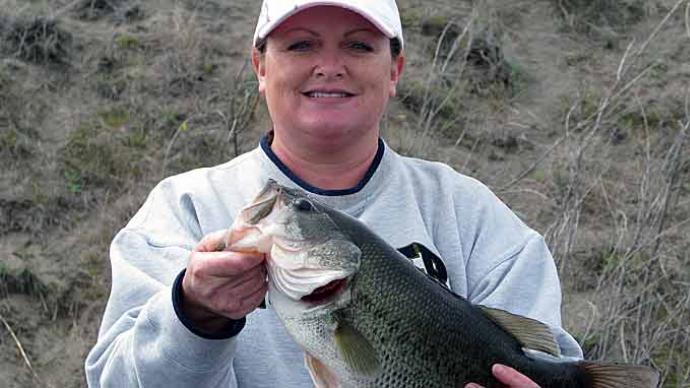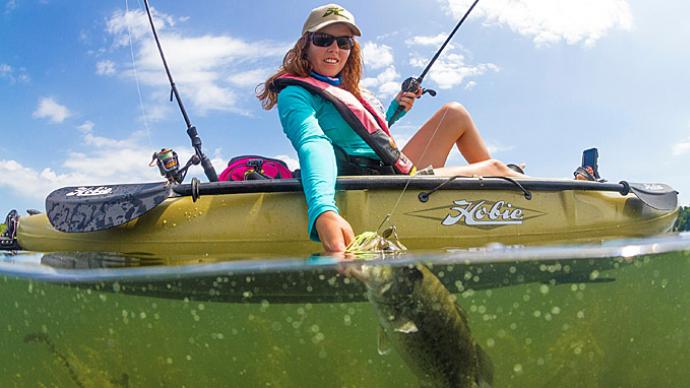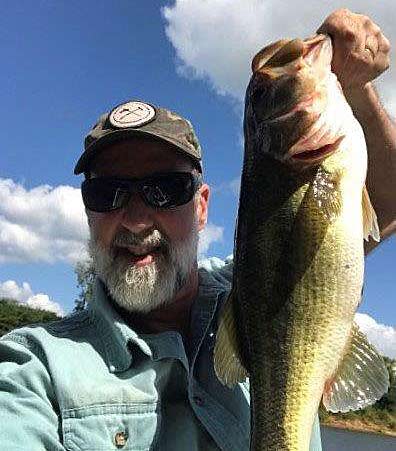
“Cat quick” is a common expression because we’ve all seen that blur of feline fur when cats pounce. However, it isn’t speed alone that accounts for cats’ kills as their stealth sets up their catches. Watch a housecat stalking its prey, and you'll see it lift and drop its paws in slow motion, frequently freezing. What does this have to do with bass fishing? I contemplate cats when I fish and try to paddle and cast with cat-like deliberation. If I'm reaching for a rod, I imagine the series of movements before executing them to lessen the likelihood of bumping a rod against my canoe. Why this extra effort?
Well, bass have inner ears, tiny bones that can even detect the clicking of distant crayfish claws. They also have lateral lines that detect vibrations. Sound, of course, is vibration. This is why, compared to many modern anglers, I choose to be primitive, slowly paddling my boat and fishing without electronics. I fish so slowly and quietly that sometimes my canoe bumps a bass, unaware I was there. I see their swirl right before my boat’s bow, telling me that I approached with cat-like quiet, that even on their home turf with their inner ears and lateral lines, they didn’t hear me coming.
Sound matters more than many anglers think. Submarines have long used sound to their advantage and their enemies’ disadvantage, listening to a surface ship’s prop to determine its distance and direction. And water is a fantastic medium for sound. Humpback whales can hear each other sing up to 10,000 miles away. Likewise, bass hear more than one might assume and react more too. For example, scientists have found that impoundment bass in significant numbers will vacate deep water structure at the approach of a boat. They’re not the only ones who’ve observed fish fleeing man-made sounds.
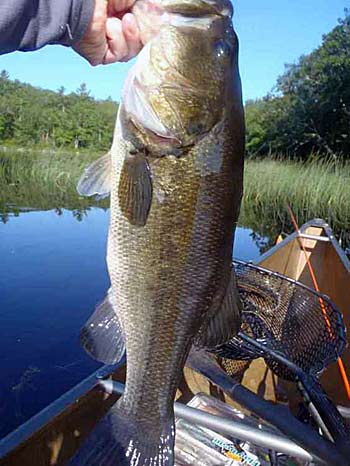
Bob Wilson, a Tennessee angler and Bass Resource member (Blue Raider Bob), has also seen the effect of sound. He waded Mississippi River swamps and oxbows for bream as a young man.
“I would slip over the side of my johnboat into water knee-deep or deeper water, tie the boat’s painter to my belt loop, and wade. With just a moment’s pause in my movement, fish surrounded me. It was as if I had become a part of their world.”
The lesson was reinforced while wading Tunica Cutoff, a Mississippi River oxbow.
"I was creeping slowly through the willows when I caught a bluegill on my flyrod. As I placed the bluegill in my fish bag, the popping bug settled next to my bare leg and was inhaled by another big bluegill! This was right against my leg, totally unexpected and quite frightening as the big bluegill made quite the racket with his explosion. After gaining my wits, I also added him to the bag. This taught me, as well as other examples, that the disturbance of the natural world is usually short-lived if we can create, then maintain a silent presence while on the water.”
One day earlier this year, Wilson was fishing at J. Percy Priest Reservoir near Nashville. A heavy phytoplankton bloom reduced water clarity to only 12". Wilson saw several large bait balls on his sonar screen.
"Many large schools of shad were visible just below the surface surrounding my boat. When engaging the trolling motor, I noticed the schools of baitfish scatter and leave the top of the water column. When on the move with my trolling motor running, I would notice the schools begin to break up and descend well ahead of my boat, sometimes in the 10’ to 15’ range ahead of my boat. The lack of clarity reinforced my opinion that the bait fish could not see me but could hear/feel the trolling motor.”
Of course, shad are not bass, but bass do follow shad and dispersed shad might disperse bass, too. With a scientist's mindset, Wilson would shut off his trolling motor and watch the sonar screen. He saw what he'd witnessed at Tunica Cutoff.
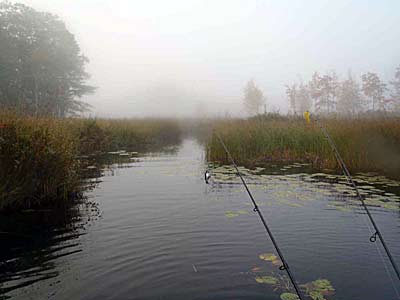
“When stationary with the trolling motor silent, the shad school would once again fill my sonar screen and occasionally surround the boat.”
Thus, I fish without a water-moving prop, but there are other ways that I emulate a cat’s quiet. For example, I've attached sticky-backed rubber strips to my canoe's gunnels. When I cast, I loft my lures so they'll land more like an Olympic high diver and less like a beer-bellied belly flopper. I also cast beyond my target when possible so that the noise of my lure landing won't be literally atop a bass and spook it. An organized boat makes a bumping error less likely. Everything in your boat should have its particular place, and after each item is used, it should be returned to that place. However, deliberation is my primary tool for stealth. I reach slowly for a rod. I return that rod to its particular place with all due deliberation.
If I’m fishing from shore, I make my first casts before I reach the water, where my footfalls are more distant. Just as I paddle slowly and carefully, I walk slowly and carefully.
I worry less about talking on the shore and the water. The transmission of sound waves from air to water is loose, and much energy is lost. Yelling, on the other hand, should be discouraged.
Because I mostly fish water that is yonder, such as unnamed, vodka-clear lakes in northwestern Ontario, the lonely Zebra mussel-filtered water of Lakes Superior and Michigan, and remote clear water bogs and ponds in Maine, the bass I target aren’t acclimated to noise to the sounds of anglers, as are bass in more populated areas, so every time I bump my boat, they might be hearing such a sound for the first time.
This is why I remember the words of the great outdoorsman, Teddy Roosevelt, who somewhat said, “Walk softly and carry a graphite stick.”
About The Author
Katie McKy began bassing by tying her Zebco 606 and fiberglass rod to her bike and pedaling to farm ponds with her brothers. As a teen, she fell in love with the Canadian Shield of northwestern Ontario, a land of endless lakes, where the smallmouth were also endless. She also loved the big water bassing of Lakes Superior and Michigan and the Mississippi River. She now lives on the coast of Maine and fishes overlooked bogs and ponds for largemouth and smallmouth, following the advice of another New Englander, Robert Frost, to take the road less traveled. She is a regular member of our forums, going by the screenname ol'crickety.



